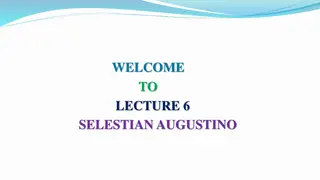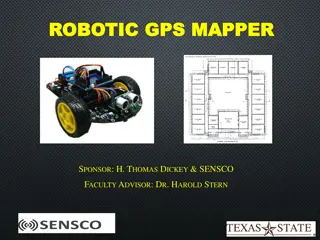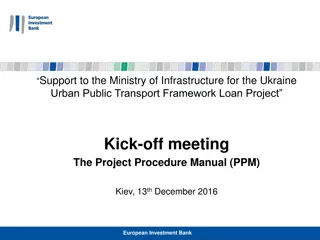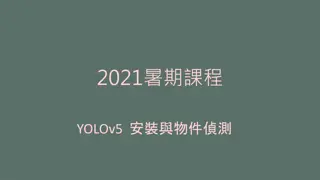2021 YOLOv5 Project Overview
This project delves into the implementation of YOLOv5 for object detection tasks utilizing the COCO dataset. Steps involve installing PyTorch, cloning necessary repositories, creating Python scripts for detection, and demonstrating model usage. The project emphasizes streamlined procedures for setting up and running YOLOv5 efficiently.
Download Presentation

Please find below an Image/Link to download the presentation.
The content on the website is provided AS IS for your information and personal use only. It may not be sold, licensed, or shared on other websites without obtaining consent from the author.If you encounter any issues during the download, it is possible that the publisher has removed the file from their server.
You are allowed to download the files provided on this website for personal or commercial use, subject to the condition that they are used lawfully. All files are the property of their respective owners.
The content on the website is provided AS IS for your information and personal use only. It may not be sold, licensed, or shared on other websites without obtaining consent from the author.
E N D
Presentation Transcript
Role & Responsibility of the Project and CPs Ethio-SHEP Project team
General idea of Project Implementation General idea of Project Implementation Objective of project intervention is contribute to strengthen the existing extension service by using Market-oriented extension approach(Ethio-SHEP approach) Implementation is based on the existing government extension structure (Federal ,Region ,Zone, Woreda, Kebele) Assignment of Focal person at each level: Region, Zone, Woreda & Kebele (*Woreda: 2 :Process owner & Focal person)
Project Implementation Structure Project Implementation Structure Based on the existing government Structure MoA AGP General Extension Directorate Horticulture Development & Technology Transfer Directorate Federal Level Research Ethio-SHEP Project Team OBoANR ABoA Regional Level Zone (ZAO) Zone (ZAO) Zonal Level Woreda Level Woreda (WAO) Woreda (WAO) DAs DAs Cooperative Trader Kebele level Farmer Groups Input Supplier 3 Water User s Association (WUA) Retailer
Role & Responsibility of CPs Role & Responsibility Responsible body 1. Implementation within the existing extension system 2. Follow up of the activities Woreda & Kebele Woreda & kebele, zone, region Woreda & Kebele Zone Region MoA (Project) 3. Reporting and documentation (*Incorporate into regular reporting system) 4. Monitoring and Evaluation Region , Zone & Woreda 5. Scale-up and create synergy with Project intervention & regular extension program(Incorporate into regular program) Region, Zone, Woreda & Kebele
Project Intervention Modality Technical cooperation project based on the bilateral government agreement Focus on capacity building of experts & farmers No direct budget support for woreda (*Activity based per-dim payment & support) (*Per-dim rate based on Harmonized DSA set by MoFEC) *Actual Implementation is done by CPs, not by the project Project provide training, implementation done by government extension officers
Ethio-SHEP project team Japanese experts: Chief Advisor/SHEP approach(1) Technical advisor(Horticulture)(1) Coordinator/Training(1) Ethiopian national staffs: National SHEP coordinator(1) Regional technical advisor(1+1) Office management(1) Driver(3)
Role & Responsibility of the Project 1.Technical support :Organizing ToT for implementors 2. Financial support for implementation 3. Organizing Ethio-SHEP related event: (Market Linkage Forum, Exchange visit, etc.) *Back support and monitoring *Overall management of the project
Project support for the implementation 1. Technical support Organizing ToT for experts: Ethio-SHEP activity steps Technical training Support for In-field technical training including providing extension materials and field follow-up *Participants of those ToT (specially woreda and kebele experts) will be the actual implementor of the activity. *The project will take the role of back support.
Project support for the implementation 2. Financial support: - No budget transfer, budget management by the project. - Support based on the project activity. - Communication fee will be provided by submitting the monthly activity report (DAs/Woreda Zone Region (Project) *Based on the report and actual attendance and performance, it will be checked and settled by the project.
Report Submission Example Submitted by woreda
Project support for the implementation 3. Arrangement of Event: Organizing Market survey ToT Organizing Market Linkage Forum Organizing Exchange visit or Field day(New groups) (*New group can choose the option, Exchange visit or Field day).
Project support for the implementation *Support for field training and follow-up The project mainly support for new groups(Not for old groups) Training materials and technical support will be provided. Overall follow-up, responsibility & management is by woreda & kebele and target group members.
*General idea of Project intervention for farmer groups 4thyear groups(new):The project and CPs jointly: Actual activities will be decided based on the result of consultation with the groups & CPs. (Current woreda) 3rdyear groups: F/U and support for specific gaps identified through previous year intervention. (Not full package,,) 1stand 2ndyear groups: Handing over to CPs and support through regular extension service by CPs.
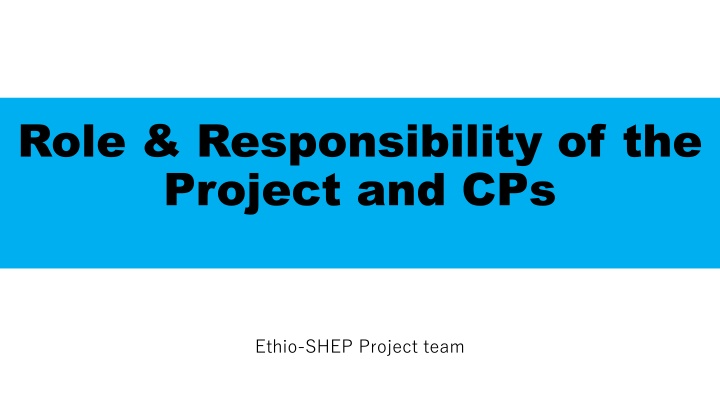





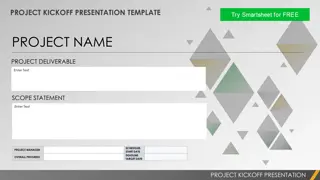

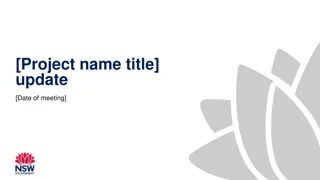
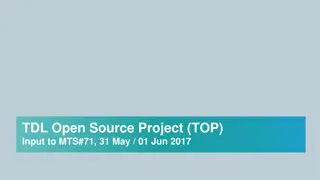


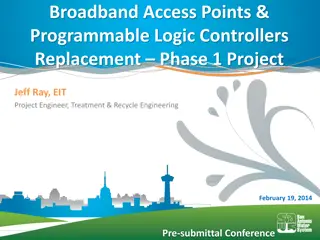

![Project Initiation Document for [Insert.Project.name] [Insert.Project.number]](/thumb/226757/project-initiation-document-for-insert-project-name-insert-project-number.jpg)
